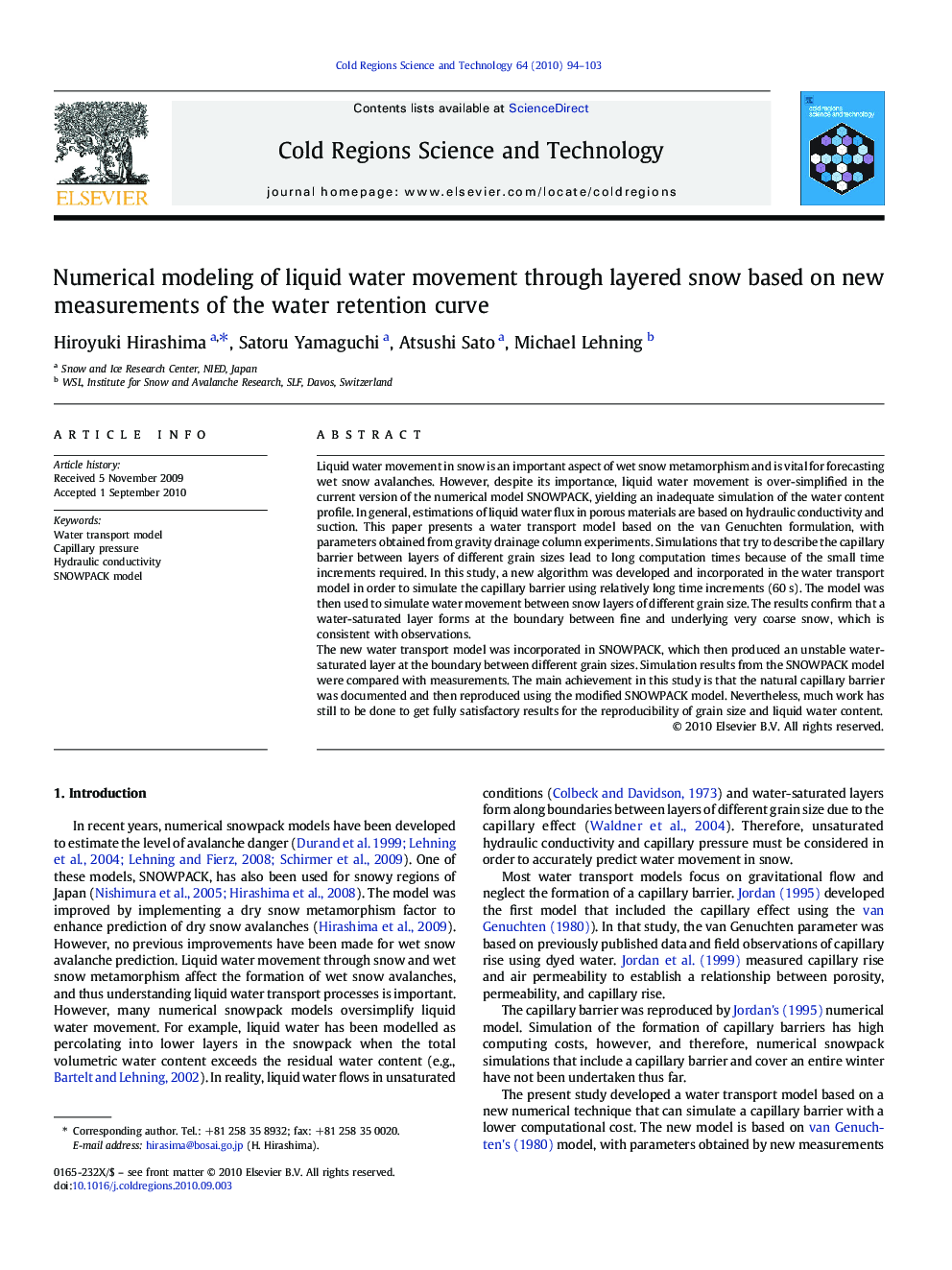| Article ID | Journal | Published Year | Pages | File Type |
|---|---|---|---|---|
| 4676233 | Cold Regions Science and Technology | 2010 | 10 Pages |
Liquid water movement in snow is an important aspect of wet snow metamorphism and is vital for forecasting wet snow avalanches. However, despite its importance, liquid water movement is over-simplified in the current version of the numerical model SNOWPACK, yielding an inadequate simulation of the water content profile. In general, estimations of liquid water flux in porous materials are based on hydraulic conductivity and suction. This paper presents a water transport model based on the van Genuchten formulation, with parameters obtained from gravity drainage column experiments. Simulations that try to describe the capillary barrier between layers of different grain sizes lead to long computation times because of the small time increments required. In this study, a new algorithm was developed and incorporated in the water transport model in order to simulate the capillary barrier using relatively long time increments (60 s). The model was then used to simulate water movement between snow layers of different grain size. The results confirm that a water-saturated layer forms at the boundary between fine and underlying very coarse snow, which is consistent with observations.The new water transport model was incorporated in SNOWPACK, which then produced an unstable water-saturated layer at the boundary between different grain sizes. Simulation results from the SNOWPACK model were compared with measurements. The main achievement in this study is that the natural capillary barrier was documented and then reproduced using the modified SNOWPACK model. Nevertheless, much work has still to be done to get fully satisfactory results for the reproducibility of grain size and liquid water content.
